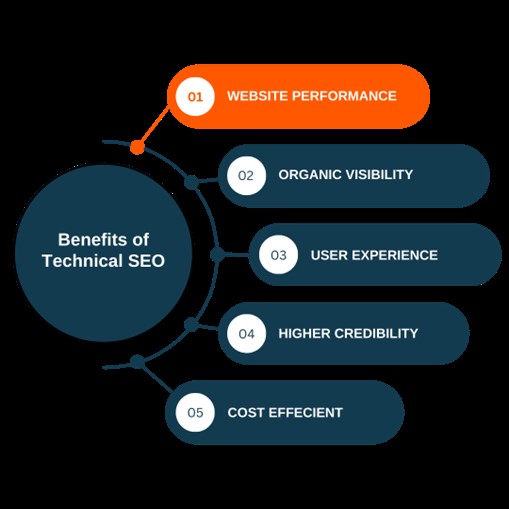This Technical SEO guide will walk you through the essential techniques and best practices for optimizing your website’s content, structure and design to rank higher on search engine results pages (SERPs). Have a look also on On-page SEO.
What is Technical SEO
Technical SEO is the process of improving a website’s architecture to ensure that it complies with modern search engines’ technical requirements in an attempt to increase organic ranks .

The Importance of Technical SEO
- Technical SEO is essential because it ensures that your website is efficiently crawled, indexed, and understood by search engines, which is fundamental for achieving higher search rankings.
- It enhances site security, performance, and mobile compatibility, thereby improving user experience and reducing bounce rates.
- Technical SEO also maintains a logical site structure and prevents issues such as duplicate content, which facilitates navigation for both users and search engines.
- By prioritizing these technical elements, you establish the groundwork for implementing other SEO strategies.
- This comprehensive approach ultimately results in increased organic traffic to your website.
Technical SEO Techniques for Higher Rankings
1.Ensure Search Engines Can Crawl and Index Your Site: Use a robots.txt file, XML sitemaps, and address crawl errors for effective navigation and indexing.
2. Improve Page Speed: Optimize images, leverage browser caching, and minimize unnecessary code to enhance user experience and SEO.
3.Make Your Site Mobile-Friendly: Design your website to be responsive across various devices, ensuring proper display and functionality.
4.Implement SSL Security: Secure your site with HTTPS to encrypt data, improve security, and enhance trustworthiness and SEO.
5.Optimize Site Structure and URLs: Maintain a logical structure with clear navigation and use descriptive, keyword-rich URLs for better user and search engine understanding.
6.Use Schema Markup: Apply structured data to provide search engines with additional context about your content, potentially improving visibility in search results.
7.Resolve Technical Issues: Address broken links, duplicate content and 404 errors to maintain a seamless user experience and credibility with search engines.
8.Implement Canonical Tags: Use canonical tags to specify preferred URLs for similar content, consolidating link authority and preventing duplicate content issues.
9.Use Robots Meta Directives Effectively: Control how search engines crawl and index your pages using robots meta tags, specifying directives like noindex, nofollow, or noarchive as needed.
10.Utilize Structured Data: Markup specific content types (e.g., events, recipes) with structured data to enhance visibility and increase the likelihood of appearing in relevant search result features.
Key Components of Technical SEO
1.HTTPS
- To enable HTTPS and ensure secure communication between your website and its users, install an SSL certificate.
- Redirect all HTTP pages to their HTTPS versions to maintain security and consistency.
- Ensure that all elements on your website, including images and scripts, are delivered over HTTPS to avoid mixed content issues.
2.URL Organization
- To enable HTTPS and ensure secure communication between your website and its users, install an SSL certificate.
- Redirect all HTTP pages to their HTTPS versions to maintain security and consistency.
- Ensure that all elements on your website, including images and scripts, are delivered over HTTPS to avoid mixed content issues.
3.Indexability and Crawlability
- Ensuring that search engines can access all essential pages on your website.
- Creating an XML sitemap and submitting it to guide search engine bots.
- Using robots.txt to restrict which pages search engines can crawl.
- Identifying and promptly resolving crawl issues in Google Search Console.
4.Site Design
- Develop a clear and logical website hierarchy that makes important pages easily accessible from the home page.
- Implement breadcrumb navigation to improve user experience and help search engines understand your website’s structure.
- Use internal linking to distribute link equity across the website by connecting related pages.
5.Site Speed
- Compress images using appropriate formats, such as WebP, while maintaining quality.
- Minimize the size of HTML, CSS, and JavaScript files to enhance loading times.
- Implement browser caching so that users’ devices store frequently used files.
- Utilize a content delivery network (CDN) to serve content from servers closer to the user.
6.Structured Information
- Enhance search engines’ understanding of your pages’ context and content by incorporating schema markup into your HTML.
- Use structured data to create rich snippets, such as reviews, ratings, and event details, in search engine results.
- Adopt the Google-recommended JSON-LD format for implementing structured data.
- Verify the correct application of your structured data with Google’s Structured Data Testing Tool.
